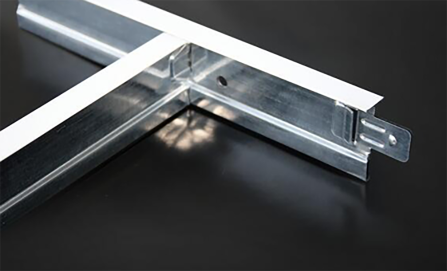10 月 . 01, 2024 18:55 Back to list
Understanding the Concept and Benefits of Grid Ceilings in Interior Design
What is a Grid Ceiling?
A grid ceiling, often referred to as a suspended or drop ceiling, is a secondary ceiling that is hung below the main structural ceiling of a building. This type of ceiling is commonly used in commercial spaces, such as offices, schools, hospitals, and retail stores. Its design not only affects the aesthetics of a room but also serves multiple functional purposes.
Structure and Design
A grid ceiling typically consists of a framework made from metal channels or grid patterns that are suspended from the main ceiling. These grids support lightweight ceiling tiles or panels that are easily removable. These tiles can be made from various materials, including mineral fiber, fiberglass, metal, and even glass. The grid itself can be customized to accommodate different aesthetics and functionality, with various sizes and spacing options available.
Advantages of Grid Ceilings
1. Ease of Installation One of the most significant benefits of grid ceilings is their relatively simple installation process compared to traditional ceilings. The grid can be installed quickly, which can save time and labor costs for construction projects.
2. Accessibility Grid ceilings provide easy access to plumbing, electrical wiring, and HVAC systems that may be situated above the ceiling. This accessibility allows maintenance and repairs to be done without extensive demolition.
3. Acoustic Management Grid ceilings can significantly improve sound insulation within a space. Acoustic ceiling tiles can absorb sound and reduce noise levels, making them ideal for situations where noise control is paramount, such as in offices and classrooms.
what is a grid ceiling

4. Aesthetic Flexibility The variety of tiles and materials available for grid ceilings allows for a high level of design flexibility. Businesses can choose tiles that reflect their brand image or complement the interior design of their space. Furthermore, grid ceilings can be painted or upgraded with decorative tiles for a more polished look.
5. Energy Efficiency When properly installed, grid ceilings can contribute to energy efficiency by enhancing temperature control. They can be used in conjunction with insulation methods to improve the overall thermal performance of a building.
Considerations
While grid ceilings offer numerous advantages, there are also some considerations to keep in mind. For instance, the height of the room may be impacted since a grid ceiling lowers the overall height of the ceiling, which could affect the perception of space in smaller rooms. Additionally, there may be limitations on the weight of fixtures or other items that can be suspended from the grid.
Maintenance and Durability
Maintenance of grid ceilings is generally straightforward. Tiles can be easily cleaned or replaced if stained or damaged. However, over time, the grid itself may require attention if it shows signs of corrosion or wear.
Conclusion
In summary, a grid ceiling is more than just an aesthetic choice; it’s a functional element that enhances the usability and appearance of a space. Its benefits, including ease of installation, accessibility for maintenance, and acoustic properties, make it a popular choice in various environments. Whether you're designing a new office, renovating a classroom, or upgrading a retail space, considering a grid ceiling may be a strategic decision that combines practicality with style.
-
Revolutionizing Interior Design with Ceilings t grid Suspended SystemNewsOct.29,2024
-
Revolutionizing Ceiling Design with ceiling access panel with Gypsum Tile WaterproofNewsOct.29,2024
-
Revolutionizing Interior Design with PVC Gypsum Ceiling: A Comprehensive GuideNewsOct.29,2024
-
Elevating Interior Design with High quality Mineral Fiber Ceiling TilesNewsOct.29,2024
-
Revolutionizing Interior Design with PVC Gypsum Ceiling: A Comprehensive GuideNewsOct.29,2024
-
Elevating Interior Design with High-Quality Mineral Fiber Ceiling Tiles: A Comprehensive GuideNewsOct.29,2024







